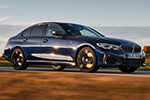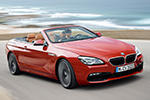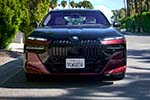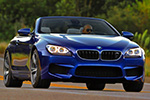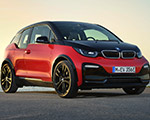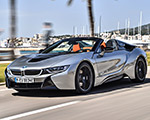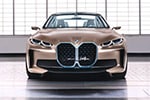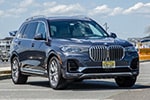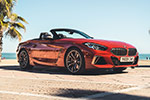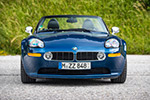BMW wasn’t the first automaker to experiment with carbon fiber in road-legal cars. Back in 1992, the legendary McLaren F1 was among the early adopters. The lesser-known Jaguar XJR-15 even preceded the BMW V12-powered supercar by a couple of years. While those two were extremely expensive and rare exotics, the 2013 i3 wasn’t. The quirky hatchback is generally considered the first mass-produced mainstream car to use carbon fiber.
BMW had previously worked with carbon fiber. In 2003, the E46 M3 CSL’s roof was made from carbon fiber-reinforced plastic (CFRP). Subsequent uses included the i8 plug-in hybrid sports car, the previous-generation 7 Series, and the iX. A variety of M models still utilize carbon fiber to this day. Additionally, the M Performance Parts catalog is filled with carbon components for a variety of non-M products.
However, Munich now says Neue Klasse models are “unlikely to make extensive use of carbon fiber.” It’s an interesting statement given the benefits of the lightweight material. BMW itself points out that a carbon body component is 20-30% lighter than an equivalent aluminum part and up to 50% lighter than steel.
Still, that shouldn’t come as a big surprise. In 2017, BMW sold its 49% stake in the SGL Automotive Carbon Fiber joint venture, though it retained an 18.3% share in the SGL Carbon company. Looking back, BMW calls it an “interesting experiment,” one that’s “unlikely to repeat, especially as energy costs continue to rise worldwide.”
So what comes after carbon fiber? Although BMW isn’t completely giving up on CFRP, it has already signaled that a replacement is in the works. Natural fiber composites for series-production cars are planned. The flax-based lightweight components are said to cut CO₂e emissions by as much as 40% compared to a carbon roof.
To make it happen, BMW has been collaborating with Bcomp, a Swiss company specializing in bio-based technologies in which the automaker holds a stake. It’s unclear whether only M cars will adopt natural fiber composites or if regular models will also utilize these renewable raw material components.
Although the technology has already been previewed on a current-gen M4’s roof and diffuser, BMW says only future models will switch to natural fiber composites. These eco-friendly parts won’t be limited to the exterior, but will also be featured in some areas of the cabin.
Source: BMW




















